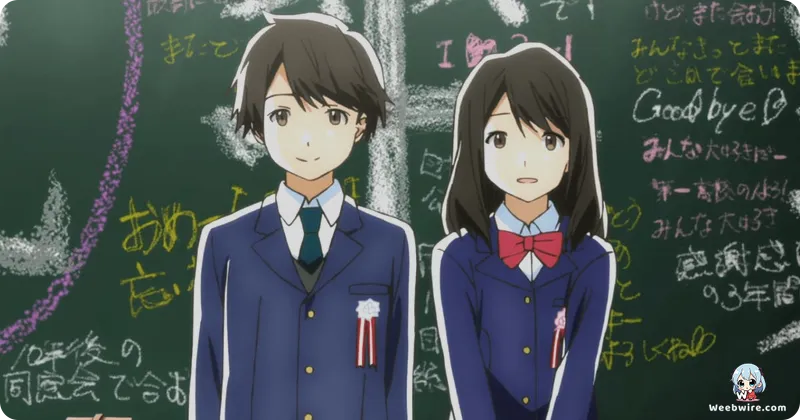The Moon Is Beautiful: Unpacking the Hidden Genius and Unconventional Direction That Made Tsukigakirei a Romance Masterpiece

The Enduring Realism of Tsukigakirei
The 2017 anime series Tsukigakirei established a distinct position within the romance genre by prioritizing painful, heartfelt realism over conventional dramatic exaggeration. The narrative meticulously follows the subtle and often awkward journey of two middle school students, Kotaro Azumi and Akane Mizuno, as they navigate the complexities of first love. Beyond the surface appeal of this delicate story, several key production decisions and thematic layers contributed significantly to the profound resonance the series achieved with its audience.
Director Seiji Kishi's Unexpected Pivot
One of the most surprising elements of the production was the involvement of Director Seiji Kishi. Kishi had previously built his reputation on high-octane, genre-bending successes such as Assassination Classroom and Angel Beats!, series defined by intense action and psychological depth. His decision to shift radically to a quiet, grounded slice-of-life romance represented a major departure from his established portfolio. Kishi's directorial skill was evident in his choice to avoid melodrama, instead focusing on minute details: prolonged silences, subtle shifts in facial expressions, and the overwhelming tension inherent in unspoken feelings. This versatility demonstrated that compelling emotional drama could be effectively drawn from the everyday anxieties of adolescence.
The Poetic Significance of the Title
The thematic depth of the series is immediately apparent in its title. Tsukigakirei translates literally to “The Moon is Beautiful.” However, this seemingly innocuous phrase carries a profound cultural significance often attributed to the literary master Natsume Soseki. Japanese tradition frequently substitutes direct declarations of affection, such as “I love you,” with poetic, indirect confessions. Soseki is widely credited with popularizing the use of “Tsuki ga kirei desu ne” (The moon is beautiful, isn't it?) as a reserved yet deep expression of romantic feeling. This concept of indirect communication perfectly mirrors the reserved nature of Kotaro, the literature-loving protagonist, and Akane, the focused runner, making the title a subtle stroke of genius that informs the entire narrative structure.

Commitment to Hyper-Realism and Location Scouting
Furthermore, Studio feel. and the production team grounded the emotional story in undeniable reality through obsessive location scouting, known as butai meguri. The series is meticulously set in Kawagoe City, Saitama Prefecture, a location renowned for its historic Edo-period charm. Animators undertook extensive efforts to ensure every backdrop was rendered with painstaking accuracy. Specific train platforms, school corridors, and local landmarks were faithfully recreated. This commitment to hyper-realism made the characters’ emotional struggles feel tangible, immediate, and highly relatable to the audience.
A Rare, Definitive Closure
Finally, Tsukigakirei defied a common convention of romance anime by providing definitive, long-term closure. Unlike the majority of series that conclude immediately after the initial confession, the final episode utilized short, powerful post-credits photo vignettes to span years of the couple's life. Audiences were given satisfying glimpses of Kotaro and Akane navigating high school, managing a long-distance university relationship, their engagement, wedding, and eventually, the arrival of their first child. This rare and fulfilling commitment to showcasing the enduring continuity of their love story, rather than simply the initial spark, cemented Tsukigakirei as a deeply unique and highly regarded entry in modern romantic animation.
Credits
Tsukigakirei
Author
Yuuko Kakihara (Series Composition/Script)
Cover Art
loundraw (Original Character Designer)
Studio
feel.
Publisher
FlyingDog
Producers





